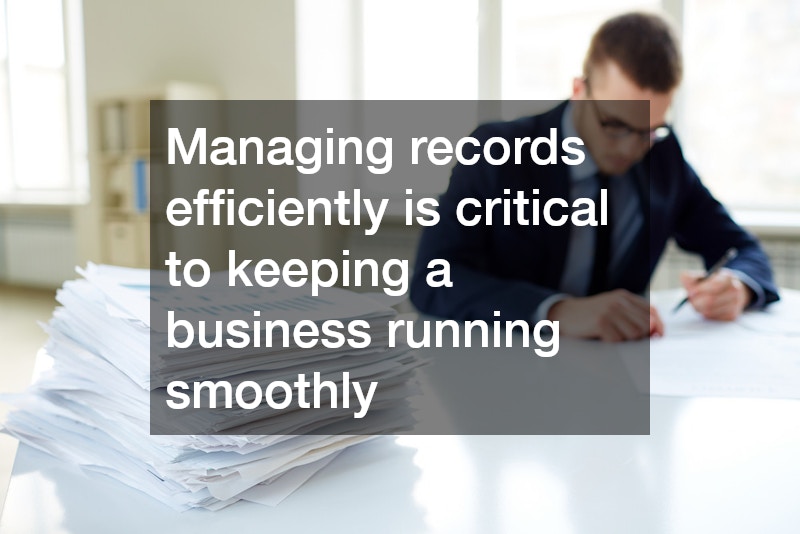In today’s fast-paced digital world, managing records efficiently is critical to keeping a business running smoothly. Whether you’re in manufacturing, healthcare, finance, or any highly regulated industry, keeping track of records is about more than just staying organized — it’s about compliance, accountability, and accessibility. That’s where document management software, particularly Record control document management software systems, comes into play.
Record control document management software is designed to help businesses track, organize, and control documentation throughout its lifecycle. This includes everything from creation and revision to approval and archiving.
If you’re considering implementing a document control system or just want to understand how it works, this guide outlines the most important things to know.
What Is Record Control Document Management Software?
Record Control software is a specific type of document management system (DMS) that emphasizes version control, regulatory compliance, and secure access. It allows users to store documents electronically, apply permission-based access, and track changes in real time. Unlike general cloud storage platforms, Record Control systems provide detailed audit trails and structured workflows, which are essential for businesses needing to maintain records according to strict standards.
Most systems will allow you to set user permissions, automate document routing, and log every action taken on a document. This gives companies transparency and peace of mind when dealing with sensitive or regulated content.
Who Needs Document Control Software?
Record Control document management is especially useful in industries where compliance and quality assurance are top priorities. For example, manufacturers adhering to ISO standards, healthcare facilities following HIPAA regulations, or pharmaceutical companies complying with FDA guidelines will benefit greatly from the structure and control such software offers.
Even companies outside highly regulated fields can take advantage of these systems. Small businesses, legal firms, and educational institutions often need to maintain strict control over their records and appreciate the organization and access a DMS provides.
Key Features to Look For
When choosing Record Control software, not all systems are created equal. A few essential features to consider include:
-
Version Control – Automatically tracks revisions so users can view, compare, or revert to earlier versions of documents.
-
Audit Trails – Provides a log of all document activity, including views, edits, approvals, and transfers.
-
Automated Workflows – Streamlines approvals, reviews, and escalations so documents move through the process efficiently.
-
Role-Based Access – Ensures only authorized users can view or modify specific files, which is vital for compliance.
-
Retention Policies – Lets you define how long documents are kept and automatically archives or deletes them based on policy.
-
Integration Capabilities – The best systems integrate with other software platforms like ERP systems, CRM tools, or Microsoft Office.
When reviewing your options, make sure the software you choose aligns with your company’s security requirements, industry standards, and document volume needs.
Benefits of Using a Record Control System
There are several benefits to implementing a document management system with strong record control capabilities:
-
Improved Compliance: Systems are designed to meet regulatory requirements and help avoid legal or financial penalties.
-
Enhanced Efficiency: By automating repetitive tasks and centralizing documents, teams save time searching for files or following up on approvals.
-
Increased Security: Secure login, encrypted storage, and access controls protect sensitive data from breaches or unauthorized access.
Over time, companies that implement document control software see gains in productivity, fewer compliance errors, and better decision-making based on accurate, accessible records.
Challenges to Keep in Mind
Despite its many advantages, adopting Record control document management software software isn’t always without challenges. The biggest hurdle for many businesses is user adoption. Employees may be resistant to change or may not understand how to use the system properly. That’s why training and ongoing support are crucial to success.
Another potential challenge is data migration. Moving from a paper-based or legacy system to a digital one requires careful planning to avoid losing important documents or creating confusion.
Finally, businesses must consider cost and scalability. While many software solutions are subscription-based and cost-effective, prices can vary based on features, user licenses, and storage needs.
Record control document management software plays a vital role in helping organizations manage their records effectively and securely. From improving regulatory compliance to boosting efficiency and reducing risk, it offers significant advantages for businesses of all sizes and industries.
If your organization is still relying on outdated or manual record-keeping processes, now is the time to consider a modern, structured solution. With the right system in place, you can improve accountability, streamline operations, and protect your most important business assets—your records.
By carefully evaluating your needs and choosing the right platform, Record control document management software can become a long-term asset to your organization’s growth and success
.


